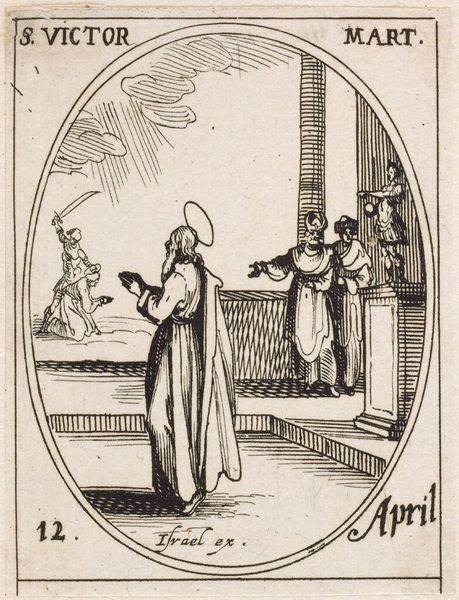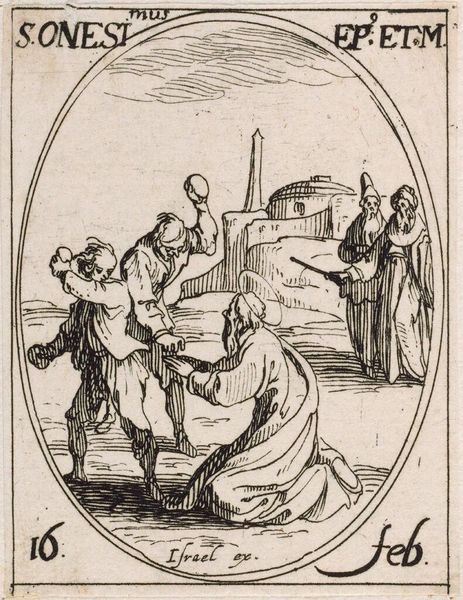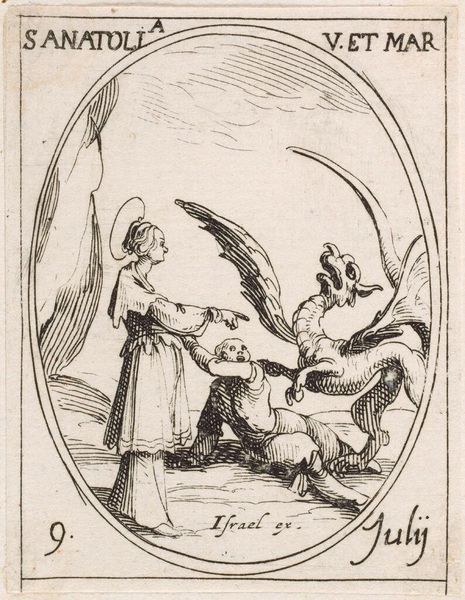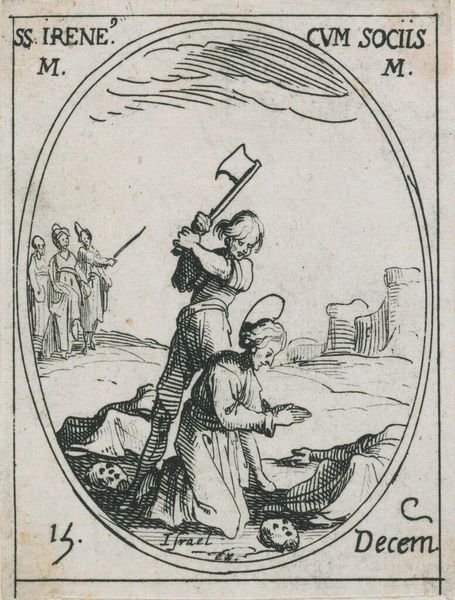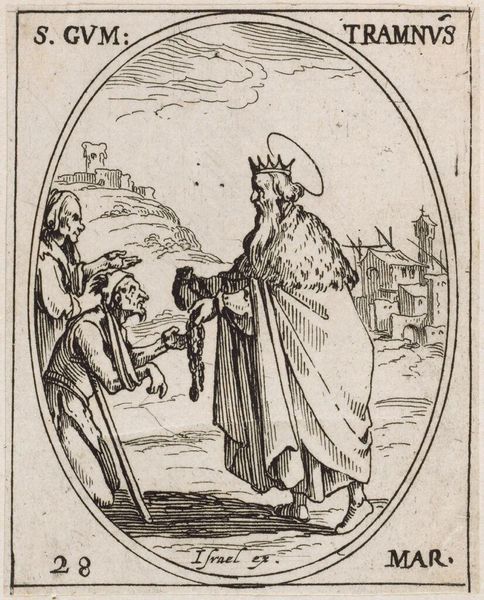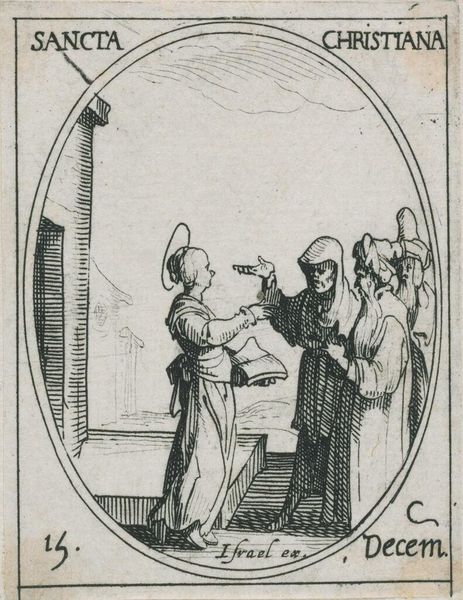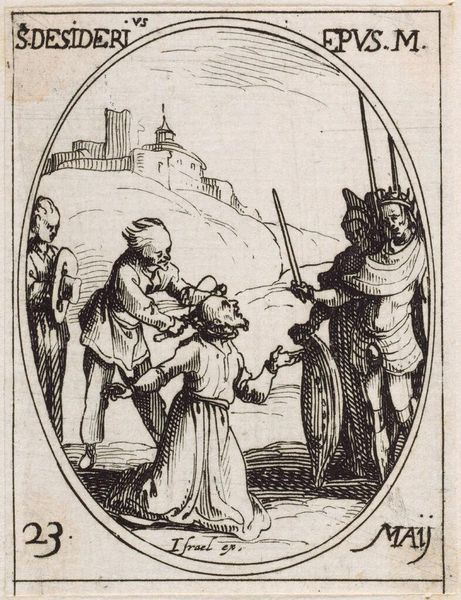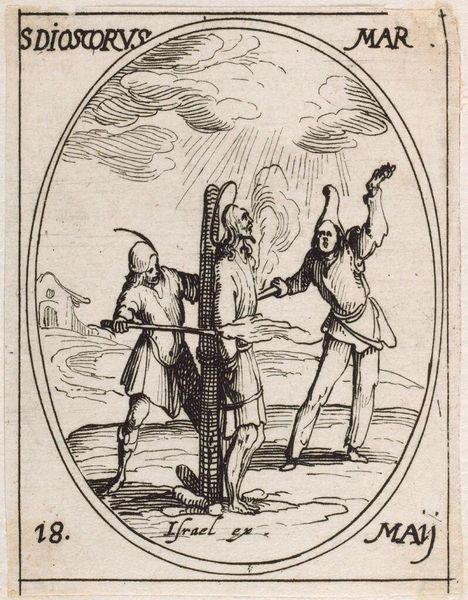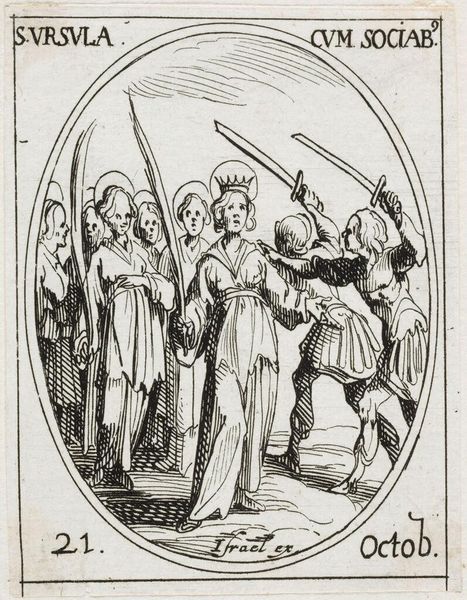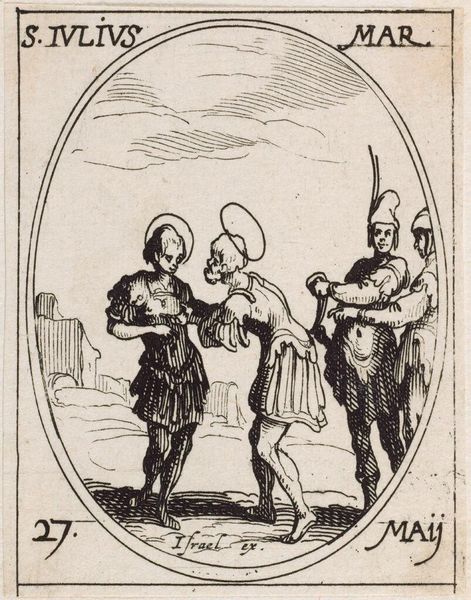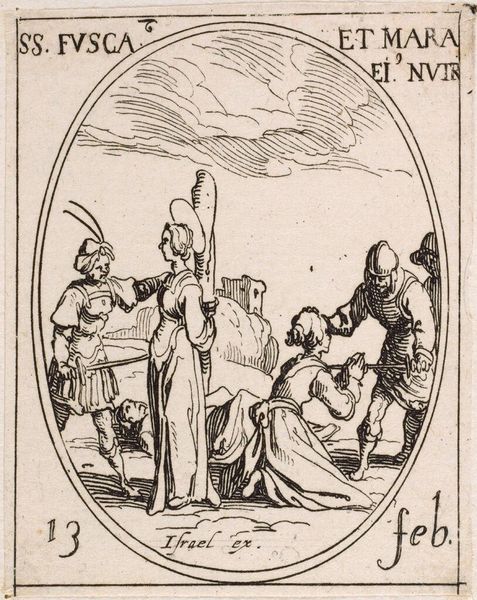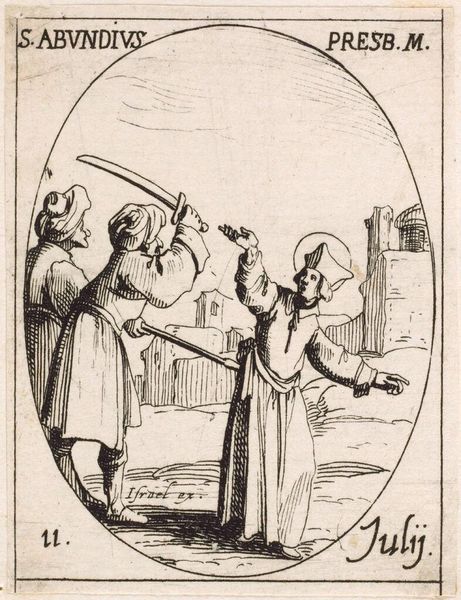
Dimensions: 7.6 x 4.9 cm (3 x 1 15/16 in.)
Copyright: CC0 1.0
Curator: Today we’re looking at Jacques Callot’s small etching, "Saint Paulinus," housed at the Harvard Art Museums. It's fascinating to see how Callot uses such minimal means to depict a complex narrative. Editor: I'm struck by the starkness of it. The figures almost seem suspended, trapped within the oval frame. What kind of statement does it make, using such a limited format? Curator: Callot was a master of etching, manipulating the copper plate to create incredible detail and tonal variation, even at this scale. His prints circulated widely and shaped perceptions. Editor: Absolutely. And consider the labor involved in such meticulous work! Each line, a deliberate act. It challenges our notions of "high art" when we see the craft inherent in it. Curator: Indeed. The image itself speaks to the role of the church in offering redemption. Paulinus is shown ransoming a prisoner, embodying a crucial aspect of his legacy. Editor: A powerful image, rendered with such precision and care. It makes you wonder about the social conditions that enabled Callot to produce this piece. Curator: Precisely. Art doesn't exist in a vacuum, and Callot's world was one of religious conflict and social upheaval. Editor: This small etching holds a whole universe. It's a testament to the artist's skill, and a window into a fascinating period of history.
Comments
No comments
Be the first to comment and join the conversation on the ultimate creative platform.
